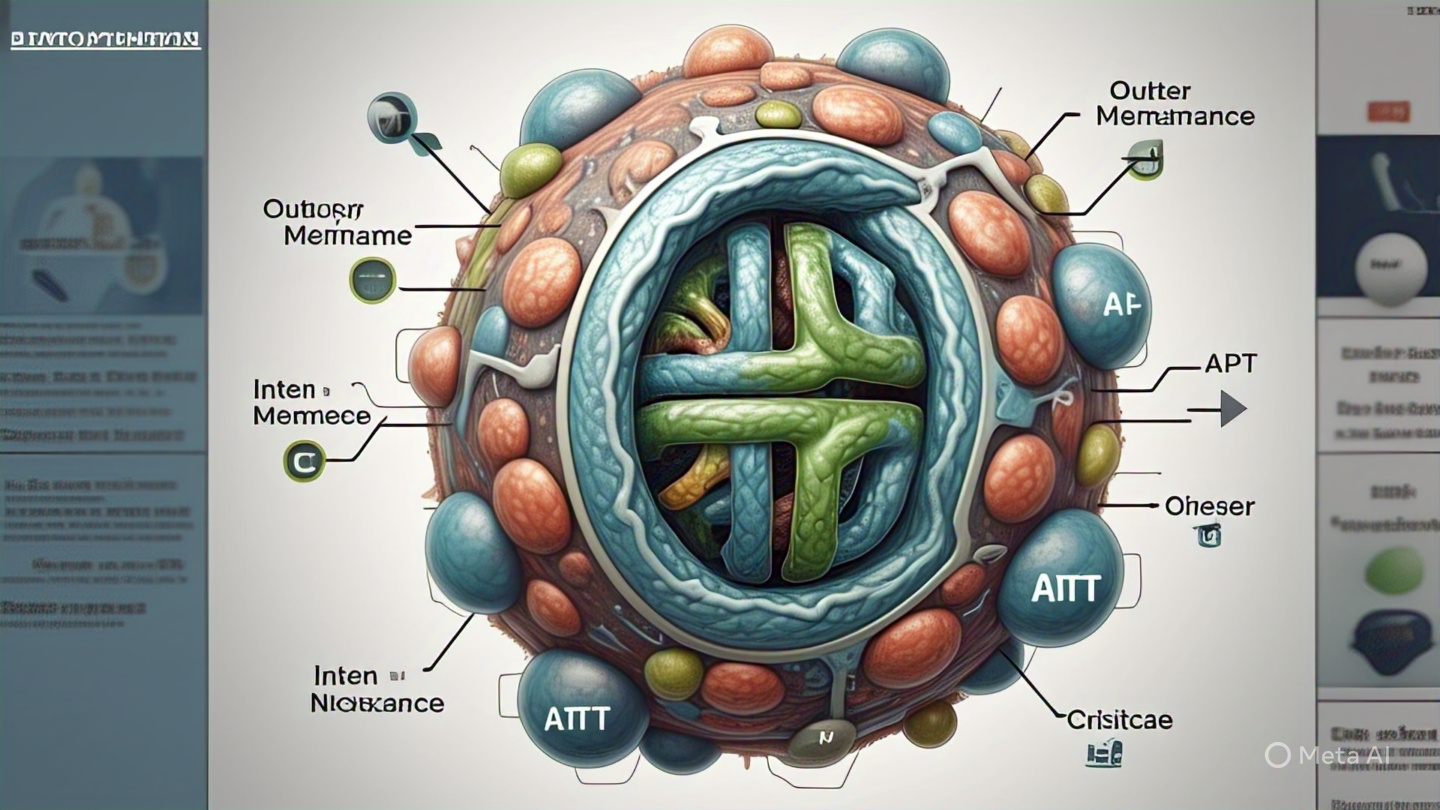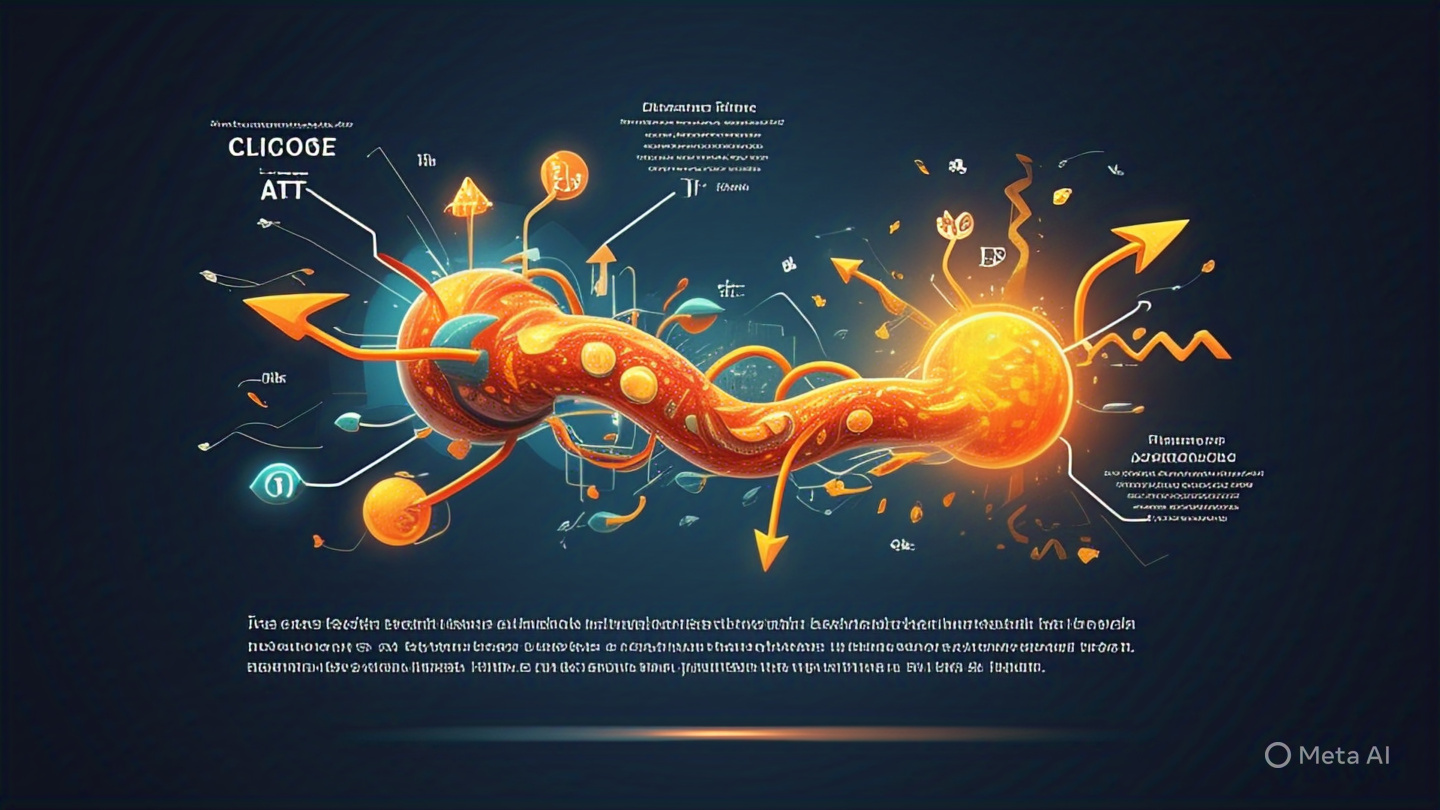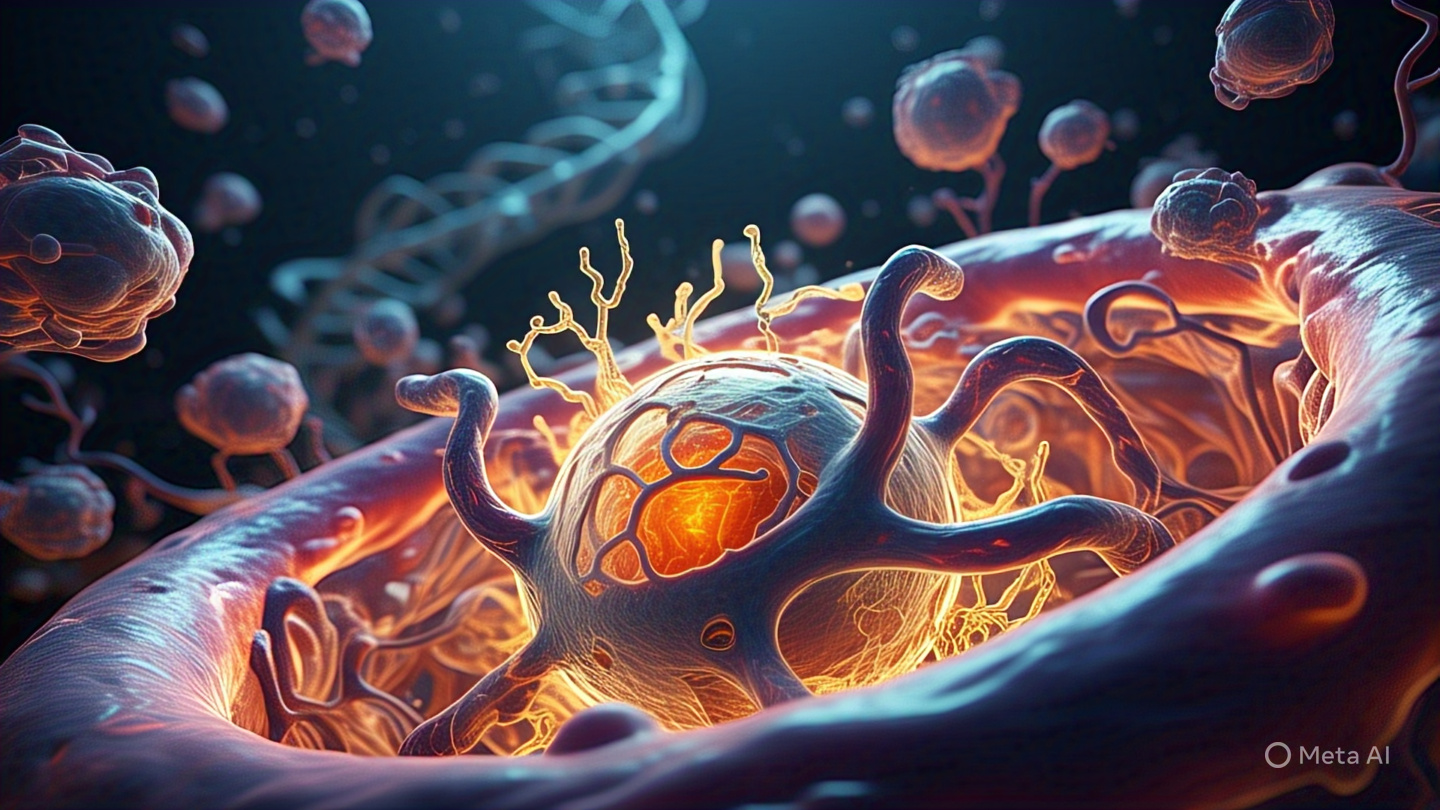Estimated reading time: 8 minutes
Key Takeaways
- Mitochondria are the powerhouses of your cells, producing energy vital for daily activities.
- They impact not just energy but broader health, influencing aging and chronic conditions.
- Lifestyle choices like diet, exercise, and sleep can support or harm mitochondrial function.
- Protecting these tiny structures naturally can boost vitality and wellness over time.
Table of Contents
- 1. What Are Mitochondria?
- 2. How Do Mitochondria Produce Energy?
- 3. Why Do Mitochondria Matter for Your Energy and Health?
- 4. Factors That Affect Mitochondrial Health
- 5. How to Support Mitochondrial Health Naturally
- 6. Common Myths and Misconceptions About Mitochondria
- 7. When to Seek Professional Help
- 8. Frequently Asked Questions (FAQs) About Mitochondria
Introduction
Have you ever wondered why some days you feel bursting with energy, while others leave you dragging your feet? It’s not just about sleep or what you ate—there’s a tiny hero inside your cells working tirelessly to keep you going. Meet mitochondria, often dubbed the powerhouses of your body, responsible for fueling everything from your morning jog to your late-night thoughts.
At WikiHomeRemedies, we’re here to guide you through understanding these vital structures and why they’re key to your health. Many of us—over 50% of adults, according to surveys by the CDC—struggle with daily fatigue. That’s a signal something deeper might be at play. In this article, we’ll uncover what mitochondria are, how they power your life, and why caring for them can transform your energy levels. With science-backed insights from trusted sources like the NIH and WebMD, plus practical tips rooted in nature’s healing power, let’s explore how to reclaim your vitality together.
1. What Are Mitochondria?
Let’s start with the basics. Mitochondria are small, specialized structures within almost every cell in your body. Known as the powerhouses of the cell, they’re responsible for turning the food you eat into usable energy. Found in nearly all eukaryotic cells—those with a defined nucleus—they play a central role in keeping you alive and active.

Their importance goes beyond a simple definition. These organelles are more abundant in tissues that demand high energy, like your muscles, heart, and brain. For instance, a single liver cell can house up to 2,000 mitochondria, as noted by resources from the NIH. This sheer number shows how critical they are for organs working non-stop. Let’s break down their features and history to grasp why they’re so remarkable.
1.1 Definition and Basic Function
Mitochondria are membrane-bound organelles tasked with producing energy. Their main job is to create ATP, a molecule your body uses to power countless processes. Think of them as tiny engines driving your cellular functions day and night.
1.2 Structure and Unique Features
- They have a double-membrane setup, with an outer layer and a folded inner layer called cristae, which boosts their energy-making surface.
- Unlike most cell parts, they carry their own DNA, a clue to their ancient origins.
- This distinct setup allows them to function somewhat independently within cells.
1.3 Location and Quantity in Cells
You’ll find mitochondria scattered throughout your cells, but their numbers vary based on energy needs. High-demand areas like muscle fibers or nerve cells pack more of these powerhouses to meet intense workloads. This distribution ensures your body allocates resources where they’re needed most, keeping you moving and thinking clearly.
1.4 Evolutionary Origin
Curiously, mitochondria likely started as independent bacteria billions of years ago. According to the endosymbiotic theory, they were engulfed by early cells and formed a partnership. Over time, this bond shaped life as we know it, a fascinating story backed by university biology studies.
2. How Do Mitochondria Produce Energy?
Now that you know what mitochondria are, let’s explore how they fuel your body. They take nutrients from your food—think sugars and fats—and transform them into energy through a process called cellular respiration. This isn’t just a science term; it’s the foundation of why you can run, think, or even breathe.

The end product is ATP, a molecule acting as your body’s energy currency. Every muscle contraction or thought hinges on ATP, which mitochondria tirelessly supply. To make this clearer, imagine mitochondria as a bustling power plant, converting raw materials into electricity for a city. For a deeper look, a diagram showing this process would help—picture a simple flow from food to energy with labeled stages.
2.1 Overview of Cellular Respiration
- Glycolysis: Starts in the cell’s fluid, breaking sugar into smaller bits.
- Krebs Cycle: Happens inside mitochondria, extracting more energy from those bits.
- Electron Transport Chain: Uses oxygen to crank out ATP on the inner membrane.
2.2 Role of ATP in the Body
ATP drives nearly every action in your body. It powers your heartbeat, fuels your brain during a tough decision, and helps muscles lift groceries. Without this energy currency, sourced straight from mitochondria, even basic tasks would grind to a halt, as explained by resources on PubMed.
2.3 Inputs and Outputs of Energy Production
- Inputs: Glucose from carbs, fats, and oxygen from the air you breathe.
- Outputs: ATP for energy, plus carbon dioxide and water as byproducts.
3. Why Do Mitochondria Matter for Your Energy and Health?
Understanding how mitochondria work leads to a bigger question—why should you care? When they function well, you feel a surge of energy, ready to tackle your day. But if they falter, fatigue creeps in, making even small tasks feel like climbing a mountain.
Their impact stretches beyond just powering you up. Mitochondria influence your overall wellness, playing roles in repairing cells and managing growth. Studies from Harvard Health show that when they’re off-balance, it’s linked to over 50% of chronic fatigue cases. Let’s unpack how deeply they’re tied to your daily life and long-term health.
3.1 Impact on Energy Levels
Efficient mitochondria mean you wake up refreshed and stay alert. Poor function, though, can leave you sluggish, no matter how much coffee you sip. It’s often the root of that mid-afternoon slump many of us know too well.
3.2 Broader Health Implications
- They regulate cell death, clearing out damaged cells to keep tissues healthy.
- They help manage calcium levels, crucial for muscle and nerve function.
- They support heat production, keeping your body warm when it’s chilly.
3.3 Connection to Health Conditions
Mitochondrial hiccups don’t just sap energy—they’re tied to serious issues. Research from the NIH points to links with neurodegenerative conditions like Parkinson’s, as well as metabolic challenges like diabetes. If you’ve felt unexplained exhaustion or muscle weakness, this might be a clue to dig deeper with a professional.
3.4 Aging and Longevity
As we age, mitochondrial performance often declines, contributing to that slower pace or creaky joints. Studies suggest their wear and tear speeds up aging signs. Protecting them now could mean more vibrant years ahead, a focus backed by ongoing research at leading institutes.
4. Factors That Affect Mitochondrial Health
You might be wondering what throws these tiny powerhouses off track. Everyday choices play a huge role in their well-being. From what’s on your plate to the air you breathe, many elements can either support or harm them.
Beyond personal habits, the world around you matters too. Pollutants and chemicals in the environment can silently chip away at their efficiency, as noted by WHO reports. Let’s look at the main culprits and how they disrupt these vital structures.
4.1 Lifestyle Factors
- Diet: Processed foods heavy in sugar can strain mitochondria over time.
- Exercise: A sedentary life lowers their numbers and efficiency.
- Stress: Constant tension floods your system with cortisol, adding strain.
4.2 Environmental Toxins
Your surroundings can pose invisible threats. Pesticides, polluted air, and even household cleaners may introduce toxins that damage mitochondrial membranes. Reducing exposure, as environmental health studies suggest, becomes a quiet but powerful way to shield your inner engines.
4.3 Genetic Influences
Sometimes, the challenge comes from within. Inherited mitochondrial disorders, though rare, can disrupt their function from birth. If fatigue or weakness runs in your family, a chat with a healthcare provider might uncover if genetics are at play.
4.4 Oxidative Stress and Damage
Mitochondria produce energy, but they also create byproducts called free radicals. When these build up, they cause oxidative stress, wearing down cellular parts. Antioxidants, found in colorful fruits and veggies, act as a natural defense, helping to balance this internal struggle.
5. How to Support Mitochondrial Health Naturally
Knowing what harms mitochondria is only half the journey. Let’s talk about nurturing them with gentle, natural steps. At WikiHomeRemedies, we believe nature offers some of the best tools to boost your body’s inner strength, and science backs this up with findings from places like the Mayo Clinic.

Start with small, doable changes. A few tweaks to your routine can spark a noticeable lift in how you feel. From food to movement, rest, and even mindset, here’s how to care for those cellular powerhouses with nature’s wisdom as your guide.
5.1 Nutrient-Rich Diet
- Load up on antioxidants with berries, spinach, and kale to fight oxidative stress.
- Choose healthy fats from avocados, nuts, and olive oil for membrane support.
- Seek B vitamins in whole grains and eggs to aid energy conversion.
- Add leafy greens and seafood for magnesium, a key player in ATP production.
5.2 Regular Exercise
Moving your body isn’t just for muscles—it’s a boon for mitochondria too. Aerobic activities like brisk walking or cycling, alongside strength training, can increase their density and efficiency. A 2023 study even found a 20% boost in mitochondrial function with consistent exercise, so lace up those sneakers and start small if needed.
5.3 Quality Sleep
- Prioritize 7-9 hours nightly to let cells repair.
- Create a dark, quiet space to ease into rest.
- Stick to a steady bedtime to sync your body’s rhythm.
5.4 Stress Management
- Try mindfulness or deep breathing for 5 minutes daily to calm your system. WikiHomeRemedies
- Practice gentle yoga to lower cortisol and ease tension.
- Carve out quiet moments to recharge your mental reserves.
5.5 Hydration and Detox
Water is a simple yet mighty ally. Staying hydrated—aim for about 8 cups (2 liters) a day—helps your cells, including mitochondria, run smoothly. Also, cut back on processed items and opt for natural cleaning products to lessen toxin exposure, giving your body a cleaner slate to work with.
5.6 Supplements (With Caution)
Certain supplements show promise, like Coenzyme Q10 for energy support or magnesium for cellular processes, per WebMD insights. NAD+ precursors are gaining attention for aging-related benefits too. Always talk to a healthcare provider before starting any, as your unique needs matter more than a one-size-fits-all fix.
6. Common Myths and Misconceptions About Mitochondria
With so much buzz around energy and health, it’s easy for misunderstandings to spread. Let’s clear the air on a few common ideas about mitochondria. At WikiHomeRemedies, we aim to keep things grounded in science from trusted sources.
6.1 Myth 1: Only Energy Production
Some think mitochondria just churn out energy, but their role is broader. They manage calcium balance for nerve signals and produce heat to maintain body temperature. Research shows they even guide cell death to prevent issues, proving they’re multi-talented players in your wellness.
6.2 Myth 2: More Means Better
Having more mitochondria doesn’t guarantee boundless energy. Efficiency matters as much as quantity—damaged or sluggish ones won’t help, no matter the count. Focus on supporting their health through diet and lifestyle over assuming sheer numbers solve everything.
6.3 Myth 3: Supplements as a Cure-All
It’s tempting to think a pill can fix mitochondrial woes, but that’s not the full picture. Supplements might support, yet true health comes from a balanced approach—good food, rest, and movement. Science urges a holistic path, not a quick shortcut, for lasting vitality.
7. When to Seek Professional Help
Caring for your mitochondria naturally is empowering, but sometimes you need expert guidance. Persistent struggles might hint at deeper issues beyond lifestyle tweaks. We’re here to gently nudge you toward the right support when home remedies aren’t enough.
7.1 Signs of Mitochondrial Issues
- Unexplained fatigue that lingers despite rest.
- Muscle weakness or pain with no clear cause.
- Neurological changes like memory gaps or confusion.
- Metabolic shifts, such as sudden weight changes.
7.2 Diagnostic Approaches
Doctors can dive deeper with specific tests if these signs show up. Tools like mitochondrial DNA analysis or muscle biopsies, as outlined by NIH guidelines, help pinpoint issues. These aren’t steps to fear but pathways to clarity with a trusted medical team.
7.3 Encouragement for Professional Care
Don’t guess when it comes to your health—reach out for help if something feels off. A healthcare provider can offer tailored answers, and that’s a brave, caring step for yourself. You’re not alone; professional support, alongside natural care, can light the way to feeling whole again.
8. Frequently Asked Questions (FAQs) About Mitochondria
Still curious about these cellular wonders? Let’s tackle some common questions to round out your understanding. We’ve kept the answers short and grounded for clarity.
Can mitochondrial damage be reversed?
Some damage can improve with lifestyle shifts like better nutrition and exercise. However, severe or genetic issues may need medical care. Research is ongoing, so consult a provider for your situation.
What is ATP, and why is it important?
ATP, or adenosine triphosphate, is your body’s energy molecule. Made by mitochondria, it fuels every move and thought. Without it, basic functions would simply stop.
What foods best support mitochondrial health?
Focus on berries, nuts, avocados, and leafy greens for antioxidants and fats. Whole grains and fish supply B vitamins and magnesium. These nourish your cells naturally.
How do mitochondria differ from other organelles?
Unlike most cell parts, mitochondria have their own DNA and double membranes. They focus on energy production, while others handle tasks like protein making or waste removal.
Are mitochondrial issues always genetic?
Not always. Many stem from lifestyle or environmental factors like diet or toxins. Genetic causes exist but are less common, often needing specialized testing to confirm.







